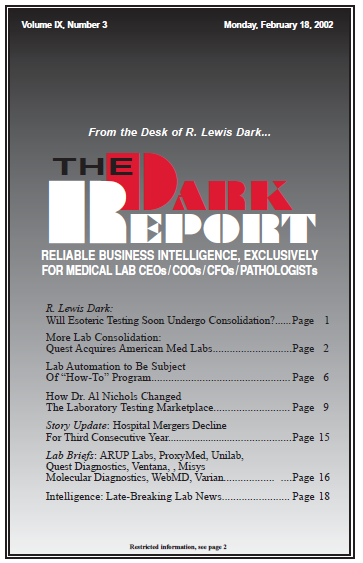CEO SUMMARY: Mastering lab automation is more difficult than it appears. The first-ever “Lab Automation Boot Camp” is assembling experienced lab administrators who have experience (and scars) in automation and are committed to telling the real story about making automation successful. It’s a “no-spin zone” where truth is the goal and there is balanced reporting …
Lab Automation Subject Of “How To” Program Read More »
To access this post, you must purchase The Dark Report.


